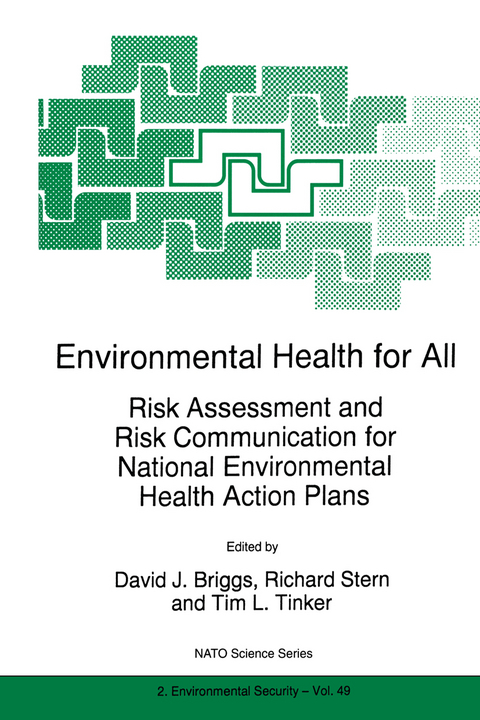
Environmental Health for All
Springer (Verlag)
978-0-7923-5452-9 (ISBN)
Accurate assessment of environmental hazards and related risks is a primary prerequisite for effective environmental health protection, at both the individual and collective level. National and regional policies on environmental health need to be guided by knowledge about the risks to the populations involved; as the Environmental Action Plan for Europe notes, 'priority setting requires the comparative assessment of risks to health of different environmental factors against the cost of controlling them.' In recent years this has assumed particular importance, for with the encouragement of the World Health Organisation (WHO), all countries in Europe are committed to producing National Environmental Health Action Plans (NEHAPs), which will define priorities and targets for environmental health and the actions needed to achieve them. Reliable information on risks is clearly fundamantal to this process. Individual risk assessment is no less important in this context. Much of the responsibility and capacity to improve public health lies ultimately in the choices (e.g. about diet, smoking, alcohol consumption, sexual activities, sporting activities, travel mode, place of residence and occupation) which we make as individuals. If we are to improve and protect our own health, therefore, and in so doing play our personal role in achieving the targets set by these Plans, we need to be guided by a clear understanding of the risks involved.
One. Developing NEHAPs: practice and experience.- 1. National Environmental Health Action Plans: background and process.- 2. The NEHAP experience in the Czech Republic, Romania and Poland.- 3. Setting priorities for environmental health risks in Sweden.- Two. Risk Assessment: Exploring Relationships Between Environment and Health.- 4. Sources and consequences of uncertainty in risk estimates.- 5. Outbreak of baldness in children in Sillamäe, Estonia.- 6. Health effects of exposure to metals from manufacturing plants.- 7. Is iodide a confounding or effect modifying factor of liver cirrhosis?.- 8. Structural-functional state of the bone-muscular system in people exposed to low doses of ionising radiation.- Three. Risk Assessment: Mapping and Modelling.- 9. Tools for risk assessment: statistical and spatial methods.- 10. Environmental modelling in the NEHAP process.- 11. Tools for risk assessment: Geographic Information Systems.- 12. Monte Carlo simulations in risk assessment: cancer risk in the Polish coke industry.- Four. Risk Communication.- 13. Promoting active public participation.- 14. Putting risk communication policy into practice: a U.S. federal perspective.- 15. Priority setting of environmental and health policy options.- 16. Presenting decision-makers with their choices: environment health indicators for NEHAPs.- Five. Issues and Research Needs.- 17. What is risk?.- 18. Quantifying the unquantifiable and comparing the non-commensurate.- 19. Reality versus perception, and values versus science in risk assessment and risk perception.- 20. Coping with complexity in environmental health management and policy.- References.- Appendix 1. Workshop Conclusions and Recommendations.- Appendix 2. Workshop Participants.
| Reihe/Serie | NATO Science Partnership Sub-Series: 2 ; 49 |
|---|---|
| Zusatzinfo | XI, 278 p. |
| Verlagsort | Dordrecht |
| Sprache | englisch |
| Maße | 155 x 235 mm |
| Themenwelt | Medizin / Pharmazie ► Medizinische Fachgebiete ► Arbeits- / Sozial- / Umweltmedizin |
| Studium ► Querschnittsbereiche ► Epidemiologie / Med. Biometrie | |
| Studium ► Querschnittsbereiche ► Prävention / Gesundheitsförderung | |
| Naturwissenschaften ► Biologie ► Ökologie / Naturschutz | |
| ISBN-10 | 0-7923-5452-4 / 0792354524 |
| ISBN-13 | 978-0-7923-5452-9 / 9780792354529 |
| Zustand | Neuware |
| Haben Sie eine Frage zum Produkt? |
aus dem Bereich


